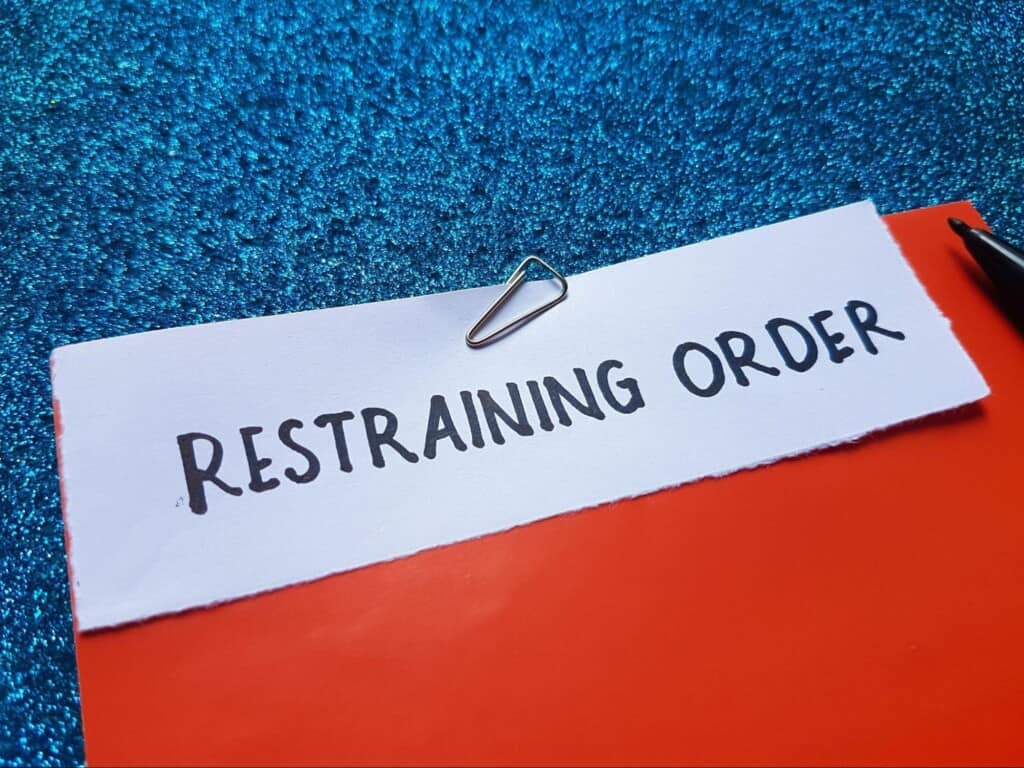
A restraining order can be troubling as it is public record that can appear on background checks for employment and other purposes. Although restraining orders that didn’t turn into a criminal offense aren’t considered serious and won’t impact someone’s life significantly, you might want to get it removed, especially if it’s the only thing that’s holding you back from having a “clean” record.
Fortunately, it is sometimes possible to get a restraining order removed from your record, though it can be a fairly long process. Our article is here to cover everything you need to know about this process by going over how to remove a restraining order from your record. Read on to know what actions you can take to get a restraining order sealed or expunged from your records.
What Is a Restraining Order?
A restraining order refers to a legal order issued by a judge to provide protection to an individual who feels threatened by someone, known as the respondent. This type of legal order is first issued temporarily, often immediately to grant protection to the petitioner, and requires a court hearing to extend the duration or become permanent.
Whether a restraining order is temporary or permanent, it is typically public record. Anyone searching for court records can access whether someone has a restraining order. Also, it can appear on someone’s criminal records if the respondent violates the restraining order, as it will then become a criminal offense.
How to Remove a Restraining Order From Your Record: Identify the Records
There isn’t just a single record where a restraining order might appear. First, you must identify which records you want to get the restraining order removed from. Here are the two main types of records to consider when it comes to restraining orders.
Court Records
Since restraining orders are issued by a public civil court, they are a part of the court records, which is public record. Anyone can access the court records and find out you have or had a restraining order.
The outcome of the restraining order, whether it was granted, denied, or expired, doesn’t matter when it comes to this, as the fact that a case was filed means that it will be a part of the court records. Nonetheless, it is possible to get a restraining order removed from your court records, which we will cover in detail below.
Criminal Records
If the restraining order is violated, it will turn into a criminal offense, whether it was temporary or permanent at the time of the violation. This means that it will go on the respondent’s criminal record, which is a lot more difficult to remove than court records.
Therefore, you will have a lot of work to do to remove a restraining order from your record if it turns into a criminal offense.
How to Remove a Restraining Order From Your Record: Take Action
Here are the actions to take to remove a restraining order from your records:
- Check Eligibility: Firstly, determine if you’re eligible for civil record sealing or expungement by checking your state’s laws. Typically, most jurisdictions allow those with a restraining order that was dismissed, denied, or withdrawn for record sealing or expungement.
- File a Petition: If eligible, the next is to file a petition to seal or expunge the records, which you can do so by going to the court where the restraining order was filed. This will begin a formal legal process that will include a hearing. Some jurisdictions also require the other party, the petitioner, to be informed about this.
- Hearing: On the scheduled date, if the judge grants your motion, the record will be either expunged or sealed, which means deleted or hidden. Ultimately, both mean that the restraining order will be removed from your record.
Restraining orders that turned into a criminal offense are much more difficult to remove from the record. Just like the above, you must check your state laws to first determine if you’re eligible for record sealing or expungement. You can consult a criminal defense attorney to determine your eligibility.
If eligible, you will follow the same steps as above, with the exception of notifying the District Attorney or the State Attorney General, who can file an objection if they believe that you don’t qualify for it.
Be Sure if You Have a Restraining Order on Your Record
Before taking any action to remove a restraining order, first, be sure that there’s a restraining order on your record in the first place.
While you can visit the courthouse where the restraining order was ordered, there are much more convenient options. Use a people search to run a public records search on yourself and discover if there’s a restraining order on your record. This will not only save you a trip to the courthouse but also help you pinpoint exactly what else is on your record.